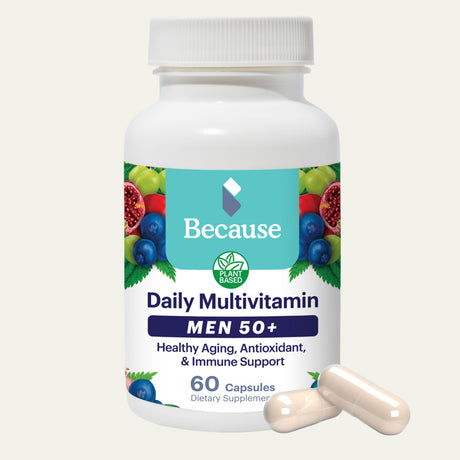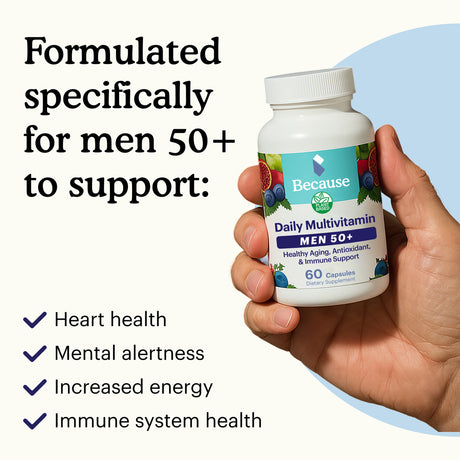Prostate stones, though less commonly discussed, affect a significant number of men as they age. Studies have shown a prevalence between 7% and 70% suggesting a need for further study. Despite their prevalence, many individuals remain unaware of the potential impact of these stones on prostate health.
If you've recently been diagnosed or suspect you may have prostate stones, navigating symptoms and treatment options can feel overwhelming. In this article, we'll delve into the world of prostate stones, shedding light on their causes, symptoms, diagnosis, and available treatments.

What are Prostate Stones?
Prostate stones, also known as prostatic calculi or prostate calculi, are small, mineralized deposits that form within the prostate gland. These stones can vary in size, ranging from tiny grains to larger calculi, and they are typically composed of calcium, phosphate, and other minerals.
Causes and Risk Factors
Understanding how and why these mineralized deposits form within the prostate gland is imperative for prevention and treatment. Prostate stones can be caused by:
- Chronic prostatitis (inflammation of the prostate gland)
- Urinary tract infections (UTIs)
- Prostate enlargement (benign prostatic hyperplasia)
- The accumulation of certain substances in prostatic fluid
- Dehydration
Risk factors include:
- Age: Prostate stones are more common in older men, with prevalence increasing with age.
- Poor Urinary Flow: Conditions that affect urinary flow, such as urethral strictures or bladder outlet obstruction, can predispose individuals to prostate stone formation.
- Pelvic Floor Dysfunction: Dysfunction of the pelvic floor muscles may contribute to urinary retention and the development of prostate stones.
Symptoms of Prostate Stones
Prostate stones can lead to discomfort and urinary symptoms, affecting daily life. If you experience any of the following symptoms, you may have prostate stones:
- Pelvic Pain: Discomfort or pain in the pelvic region, often described as dull, aching, or pressure-like sensations, may occur.
- Urinary Urgency: A sudden and compelling need to urinate, even if the bladder isn't full, can be a symptom of prostate stones.
- Frequent Urination: Increased frequency of urination, both during the day and at night, may be experienced.
- Difficulty Urinating: Straining to start urination, weak urinary stream, or feeling of incomplete emptying of the bladder can occur.
- Painful Urination: Discomfort or burning sensation during urination, similar to symptoms of a urinary tract infection, may be present.
- Blood in Urine: Hematuria, or the presence of blood in the urine, can sometimes occur with prostate stones.
- Sexual Dysfunction: Prostate stones may contribute to erectile dysfunction or pain during ejaculation in some cases.
- Lower Back Pain: Radiating pain from the lower back or perineum (area between the scrotum and anus) may occur due to prostate stone-related inflammation or irritation.
However, many of these symptoms can also be a result of other conditions such as urinary tract infections or incontinence. If you have these symptoms consult your doctor immediately for a diagnosis.

Diagnosis and Medical Evaluation
Diagnosing prostate stones typically involves a combination of medical history review, physical examination, and diagnostic tests. During the medical evaluation, your healthcare provider may inquire about symptoms, urinary habits, and any underlying health conditions. A digital rectal examination (DRE) may be performed to assess the size, shape, and texture of the prostate gland.
Additionally, imaging tests such as transrectal ultrasound (TRUS) or magnetic resonance imaging (MRI) may be ordered to visualize the prostate and detect the presence of stones. Urinalysis and urine culture may also be conducted to rule out urinary tract infections or other conditions. In some cases, a prostate-specific antigen (PSA) blood test may be recommended to assess prostate health. A comprehensive medical evaluation allows healthcare professionals to accurately diagnose prostate stones and develop an appropriate treatment plan tailored to individual needs.

Treatment Options for Prostate Stones
In this section, we explore a range of treatment options available for managing prostate stones, addressing symptoms, and promoting prostate health.
Medications for Alleviating Symptoms
Medications play a crucial role in alleviating symptoms associated with prostate stones. Alpha-blockers, such as tamsulosin or alfuzosin, are commonly prescribed to relax the muscles in the prostate and bladder neck, improving urinary flow and reducing discomfort. Nonsteroidal anti-inflammatory drugs (NSAIDs) may also be recommended to relieve pain and inflammation associated with prostate stones. Additionally, antibiotics might be prescribed if there is evidence of a concurrent urinary tract infection.
Surgical Procedures and Interventional Therapies
Surgical procedures and interventional therapies offer effective solutions for managing prostate stones, particularly in cases where conservative treatments prove ineffective. Transurethral resection of the prostate (TURP) or laser prostatectomy may be performed to remove larger stones and relieve urinary obstruction.
Other minimally invasive techniques, such as transurethral incision of the prostate (TUIP) or holmium laser enucleation of the prostate (HoLEP), can also be utilized to address prostate stones while preserving surrounding tissue. In some instances, procedures like lithotripsy, which uses shock waves to break up stones, may be employed to facilitate stone fragmentation and elimination.

Prevention Strategies for Prostate Stones
In addition to medical treatments, adopting certain lifestyle modifications can play a significant role in managing prostate stones and promoting overall prostate health. These simple yet effective changes can help alleviate symptoms, reduce the risk of complications, and improve quality of life for individuals affected by this condition.
Dietary Recommendations for Prostate Health
Consuming a balanced diet rich in fruits, vegetables, and whole grains while limiting intake of processed foods, red meat, and high-oxalate foods can support prostate health and minimize stone formation.
Hydration and Its Role in Preventing Prostate Stones
Increasing fluid intake, particularly water, can help prevent the concentration of urine and reduce the risk of stone formation in the prostate gland.
Regular Physical Activity and Its Impact on Prostate Health
Engaging in regular exercise, such as brisk walking, swimming, or cycling, can help maintain overall health and promote urinary function, reducing the risk of prostate stone development.
Other lifestyle modifications include:
- Healthy Bladder Habits: Avoiding delaying urination and emptying the bladder completely can help prevent urinary stasis and reduce the likelihood of stone formation.
- Stress Management: Practicing relaxation techniques, such as deep breathing, meditation, or yoga, can help alleviate stress and promote prostate health.
- Avoiding Caffeine and Alcohol: Limiting consumption of caffeinated beverages and alcohol can help prevent irritation of the bladder and prostate gland, reducing the risk of urinary symptoms associated with prostate stones.
- Regular Medical Follow-up: Regular check-ups with a healthcare provider can ensure timely monitoring of prostate health and adjustment of treatment plans as needed.
Living with Prostate Stones
Despite the challenges posed by prostate stones, those living with this condition can still lead fulfilling lives. The following strategies and resources are tailored to help maintain quality of life, offer support, and effectively manage symptoms, ensuring individuals can thrive despite their diagnosis.

Coping Strategies for Managing Symptoms
Coping strategies are vital for individuals managing symptoms associated with prostate stones. Here are some effective techniques:
- Stress Management: Practicing relaxation techniques such as deep breathing, meditation, or yoga can help alleviate stress, which can exacerbate symptoms.
- Pelvic Floor Exercises: Strengthening the pelvic floor muscles through exercises like Kegels can improve urinary control and reduce symptoms like urinary urgency and leakage.
- Dietary Modifications: Avoiding foods that irritate the bladder, such as caffeine, alcohol, and spicy foods, can help minimize urinary symptoms.
- Bladder Training: Gradually increasing the time between bathroom visits can train the bladder to hold urine for longer periods, reducing urinary frequency and urgency.
- Heat Therapy: Applying a warm compress or taking a warm bath can help soothe pelvic pain or discomfort associated with prostate stones.
Support Resources for Individuals with Prostate Stones
For individuals living with prostate stones, accessing support resources and networks can provide invaluable emotional support and practical guidance. Online forums, support groups, and patient advocacy organizations dedicated to prostate health offer opportunities to connect with others facing similar challenges, share experiences, and access reliable information and resources.
Additionally, healthcare providers, including urologists and specialized clinics, can offer personalized support and guidance tailored to individual needs.
Sources:
Hyun J. S. (2018). Clinical Significance of Prostatic Calculi: A Review. The world journal of men's health, 36(1), 15–21. https://doi.org/10.5534/wjmh.17018














